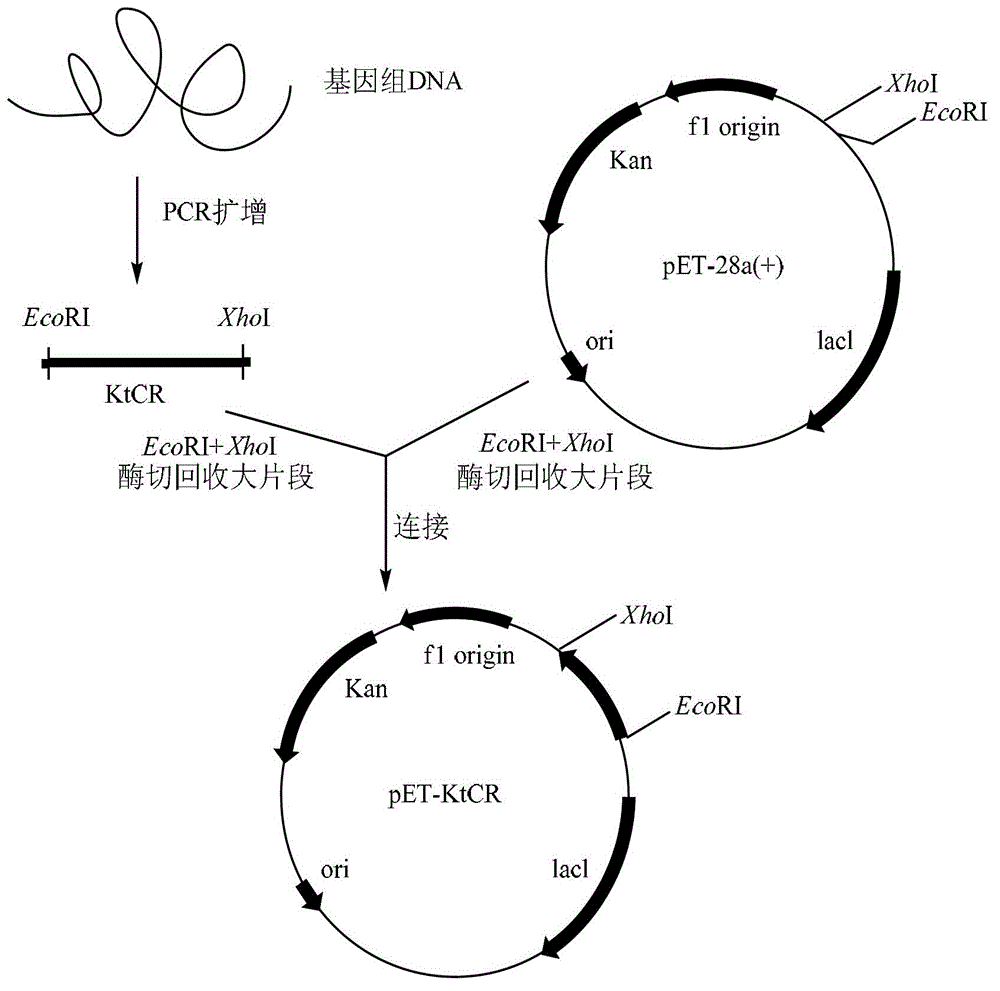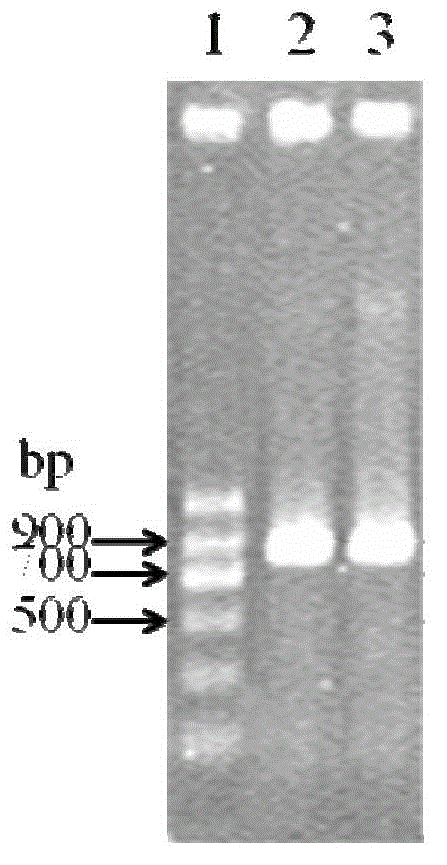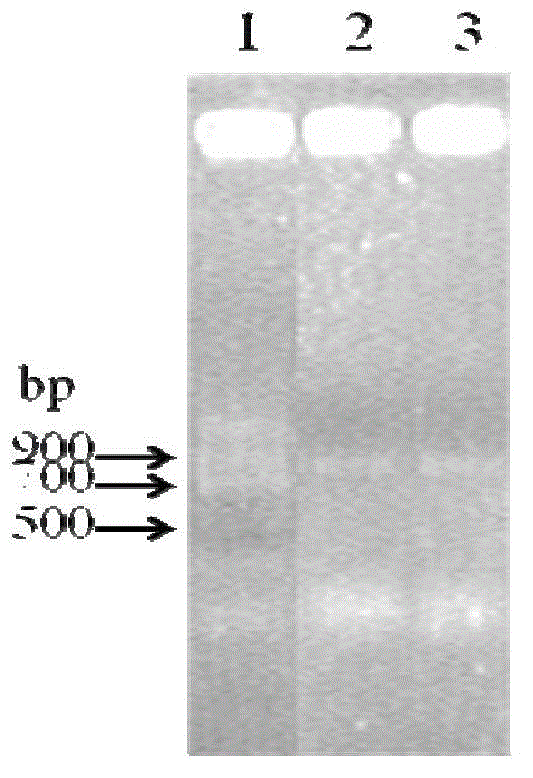Carbonyl reductase, gene and applications of carbonyl reductase in asymmetric reduction of prochiral carbonyl compound
A carbonyl reductase and carbonyl compound technology, applied in the field of recombinant expression vectors and recombinant expression transformants, can solve problems such as poor substrate tolerance, insufficient product concentration, and difficulty in product separation and purification
- Summary
- Abstract
- Description
- Claims
- Application Information
AI Technical Summary
Problems solved by technology
Method used
Image
Examples
Embodiment 1
[0059] Cloning of Example 1 Carbonyl Reductase Gene
[0060] According to the gene sequence (Genebank accession number: CAR23611.1) recorded in Genbank and predicted as Kluyveromyces thermotolerans reductase, the PCR primers were designed as follows:
[0061] Upstream primer: 5'-CCG GAATTC ATGCCCAAGACTATCGCCACA-3';
[0062] Downstream primer: 5'-CCG CTCGAG TCAGATGCTGCTGTACCCGC-3'.
[0063] Among them, the underlined part of the upstream primer (nucleotide sequence as shown in SEQ ID NO:5 in the sequence listing) is the EcoRI restriction site, and the downstream primer (nucleotide sequence as shown in SEQ ID NO:6 in the sequence listing) is underlined Part of it is the XhoI restriction site.
[0064] The genomic DNA of Kluyveromyces thermotolerans CGMCC 2.1492 was used as a template for PCR amplification. PCR system: 10 μl of 2×Taq PCR MasterMix, 1 μl of upstream primer and downstream primer (0.3 μmol / L), 1 μl of DNA template (0.1 μg) and ddH 2 O7 μl. The PCR amplificat...
Embodiment 2
[0065] Example 2 Preparation of Carbonyl Reductase Recombinant Plasmid and Recombinant Expression Transformant
[0066] The reductase gene DNA fragment and pET28a empty plasmid obtained in Example 1 were double-digested with restriction endonucleases EcoRI and XhoI at 37°C for 12 h, and purified by agarose gel electrophoresis ( image 3 , Figure 4 ), using the agarose gel DNA recovery kit to recover the target fragment. The target fragment was ligated overnight at 4°C under the action of T4 DNA ligase to obtain the recombinant expression plasmid pET-KtCR.
[0067] Transform the above-mentioned recombinant expression plasmid into Escherichia coli (E.coli) DH5α competent cells, screen the positive recombinants on the resistance plate containing kanamycin, pick a single clone, and the colony PCR verification is positive clone( Figure 5 ). Cultivate the recombinant bacteria, extract the plasmid after the plasmid is amplified, retransform into Escherichia coli (E. Inverted o...
Embodiment 3
[0068] Embodiment 3 Expression of carbonyl reductase
[0069] The recombinant Escherichia coli obtained in Example 2 was inoculated into LB medium containing kanamycin (peptone 10g / L, yeast extract 5g / L, NaCl 10g / L, pH 7.0), cultured with shaking at 37°C overnight, and Inoculum of 1% (v / v) was transferred into a 500ml Erlenmeyer flask containing 100ml LB medium, placed on a shaker at 37°C and 180rpm for shaking culture, when the OD of the culture medium 600 When it reached 0.6, IPTG with a final concentration of 0.5 mmol / L was added as an inducer, and after induction at 25°C for 12 hours, the culture medium was centrifuged to collect cells and washed twice with saline to obtain resting cells. The resulting resting cells were suspended in a pH 7.0 buffer, ultrasonically disrupted in an ice bath, and the supernatant was collected by centrifugation, which was the crude enzyme solution of the recombinant carbonyl reductase. The obtained crude enzyme solution was analyzed by polya...
PUM
 Login to View More
Login to View More Abstract
Description
Claims
Application Information
 Login to View More
Login to View More - R&D
- Intellectual Property
- Life Sciences
- Materials
- Tech Scout
- Unparalleled Data Quality
- Higher Quality Content
- 60% Fewer Hallucinations
Browse by: Latest US Patents, China's latest patents, Technical Efficacy Thesaurus, Application Domain, Technology Topic, Popular Technical Reports.
© 2025 PatSnap. All rights reserved.Legal|Privacy policy|Modern Slavery Act Transparency Statement|Sitemap|About US| Contact US: help@patsnap.com



